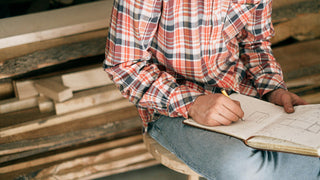IMPORTANT THINGS TO CONSIDER WHEN DESIGNING YOUR DREAM SAUNA AND HOW TO ENJOY IT TO THE FULLEST
CHOOSING the RIGHT SAUNA HEATER
Choosing the right sauna heater is the most important decision you’ll make regarding your sauna. Think of it as the engine of your car. You can have the most amazing state of the art luxury car but with a crap engine, it’s just going to leave you cold, right? Same with saunas, if you have a wrong heater, it’s not going to give you the right löyly experience, no matter how fancy your sauna is.
Take our 5 minute interactive quiz to help you choose the right sauna heater for you.
SAUNA HEATER’S POWER REQUIREMENTS IN RELATION TO the SIZE of YOUR SAUNA
Usually, the heater is selected based on the volumetric dimensions of your sauna room. If there are a lot of stone or glass surfaces in your sauna you might want to pick the more powerful model, especially if you are in-between two options and wondering which one to get.
Having said that, the performance of the IKI sauna heaters is based on the heat retention capacity of the large amount of stones they carry. This means that the heater’s power capacity is not as greatly affected by the stone and glass surfaces in the sauna room as many other heater models.

CALCULATING the VOLUMETRIC DIMENSIONS of YOUR SAUNA
Choose your sauna heater model carefully. Prolonged use of a heater that is not powerful enough may shorten its lifespan. Note that all uninsulated surfaces on the walls and the ceiling (such as brick, glass, tile, and concrete) increase the need for heating capacity. When calculating the sauna room’s volumetric dimensions, you need to add approximately 13 sq. ft (1.2m3) for each uninsulated 11 sq. ft (1 m3). If the walls are solid log, the volume should be multiplied by 1.5.
If your heater is not powerful enough, the temperature in the sauna will remain too low. In which case, sauna-goers often attempt to raise the temperature by pouring more water on to the heater. This cools down the sauna stones and renders them ineffective.
|
SIZE OF YOUR SAUNA |
PERSON CAPACITY |
SUITABLE ELECTRIC HEATER |
|
Small 176 – 317 ft³ |
~ 4-6 |
IKI Pillar 6,6 kW |
|
IKI Wall 6 kW |
||
|
IKI Corner 6 kW |
|
Large 282-565 ft³ |
~ 6-8 |
IKI Pillar 9 kW |
|
IKI Wall 9 kW |
||
|
IKI Corner 9 kW |
Person capacity is not exact as it depends on the bench and sauna design.
|
SIZE OF YOUR SAUNA |
PERSON CAPACITY |
SUITABLE WOOD-BURNING HEATER |
|
Small 176-423 ft³ |
~ 4-6 |
IKI Mini |
|
IKI Mini Plus |
|
Large 353-882 ft³ |
~ 6-8 |
IKI Original |
|
IKI Original Plus |
Person capacity is not exact as it depends on the bench and sauna design.
DESIGNING YOUR SAUNA
HEIGHT of the SAUNA ROOM
The height of your sauna room should stay relatively low. The higher the room, the more powerful the heater needs to be, as additional height increases the room’s volumetric dimensions. As warm air rises up, the recommended height between the seats and the ceiling is a maximum of 4 ft (1200 mm).
According to building regulations the minimum height for a sauna room is 6.2 ft (1900 mm). Usually anything between 6.5 – 7.5 ft (2000 – 2300 mm) is good. The room height affects energy consumption and increases heating time. Thus, room height also affects the heater’s power requirements. The required power of the heater is calculated based on the cubic volume of the sauna room. The recommended height between the upper bench and the ceiling is a maximum of 4 ft (1200 mm).
Proper thermal insulation of the walls and the ceiling structures have a significant role in retaining a uniform temperature inside the sauna room. The better the insulation, the lower the energy required for heating. Therefore, special attention should be paid to the U-value of the materials used for thermal insulation. Thin materials often have low U-values, despite “increasing” the space inside the room.
All heat-storing surfaces must be thermally insulated in the same way as the walls. Uninsulated surface in the ceiling or on the walls increases the heater’s power requirement by 1.2. With regards to uninsulated surfaces, it is always advisable to read the manufacturers’ operating instructions.
GO CREATIVE with the SAUNA BENCH ARRANGEMENT
Consider integrating your electric heater into the sauna bench arrangement when you want to achieve the clean and polished look of a modern Finnish sauna.
For example: To integrate your IKI Pillar heater safely into the sauna design you will want to use IKI’s stainless steel embedding flange.


CHOOSING the RIGHT WOOD VARIETY for YOUR SAUNA
The wood you use in your sauna interior can change the mood of your sauna drastically. Other qualities to consider when choosing the right wood variety for your sauna interiors are sustainability, longevity, easy maintenance, and the wood’s ability to withstand high humidity. Any heat-treated wood variety works well in saunas. Other popular options are Cedar (US) and Black Alder (Finland) and lately more exotic varieties such as Magnolia and Hemlock.
PRO TIP
TREATING YOUR SAUNA BENCHES REGULARLY WITH CLEAR ODORLESS PARAFFIN OIL WILL GIVE THEM LONGEVITY AND MAKE CLEANING EASIER.

Vierumäki, Finland: Wall paneling is made from heat treated Black Alder. The benches are made out of Magnolia.
 Voyageur Custom Sauna in the US made from Cedar.
Voyageur Custom Sauna in the US made from Cedar.
SAUNA LIGHTING
The mood in your sauna is created with proper sauna lighting. Good lighting can transform any space. Clever use of light and shade can make a sauna room feel cozy but also add sophistication, drama, and atmosphere. You can use lighting to draw attention to the most important elements of your sauna, such as the steam rising from your sauna heater, or create a sticking starlight night sky in the ceiling of your sauna. Light can also be used to highlight the elements in your sauna, such as the unique texture of wood or bring out other design details of your sauna interior.
There are several kinds of lighting options you can use in your sauna but before you take the plunge there are a few important things to consider when deciding which kind of lights go into your sauna. To learn more about proper sauna lighting read our guide on HOW TO CHOOSE the RIGHT LIGHTING for your SAUNA >

Cariitti sauna lights are designed and made specifically for sauna use.
5 FACTORS to CONSIDER WHEN CHOOSING SAUNA LIGHTS in a nutshell
- Make sure your sauna lights are heat and moisture resistant and have been tested to meet the UL safety and sustainability standards.
- Use sauna lights that are made from high-quality materials and designed specifically for sauna use.
- Optical light bars are a much more durable and visually pleasing lighting option than LED strips in a sauna environment.
- Esthetically the most important characteristics in sauna lights are their color rendering capacity and the color temperature of the light source. Pay attention to these values when choosing sauna lights.
- Lighting is an important mood creator in a sauna, but a certain amount of light is necessary from a safety standpoint. The need for light varies a lot between different sauna users according to their age and vision. The easiest solution is to install a dimmer with your sauna lights,so that each user of the sauna can adjust the brightness exactly as needed.
AIR VENTILATION in the SAUNA
Adequate air ventilation is also an important factor to keep in mind when designing a sauna, right after choosing the right sauna heater. The main function of ventilation is to bring fresh air into the sauna, as well as to get rid of excess moisture in the air.
If you don’t have decent ventilation the air in your sauna can feel stifling and leave you lightheaded when taking a sauna.
There are two ways to take care of the ventilation of your sauna room; mechanical or gravity ventilation.
PRO TIP
An easy way to improve the gravity ventilation in your sauna is to leave a 1–2-inch gap under the door of your sauna room.
AIR VENTILATION for ELECTRIC HEATER
In the case of inconsistent heat distribution (ears are burning but feet remain cold) in your sauna, the cause is often in ventilation. It is likely that the supply air vent is located near the floor and the exhaust air vent on the ceiling. As a result, the steam rises towards the ceiling and does not “rotate” downwards. In saunas with an electric heater, we recommend having supply air vent on the wall right near the ceiling and exhaust vents located both up by the ceiling as well as near the floor. Ideally, the upper exhaust air vent can also be closed during bathing.

AIR VENTILATION for WOOD-BURNING STOVES

INSTRUCTIONS
BASIC INSTRUCTIONS for ELECTRIC SAUNA HEATER USERS
- Keep in mind that only a licensed electrician is allowed to install an electric sauna heater.
- After taking a sauna, switch the electric heater on again for about 10 minutes to help dry out the sauna room.
- We recommend using basic sauna stones such as Olivine Diabase no larger than 4 inches (10 cm) in diameter. The stones should be placed into the heater so that there is enough room for air to circulate freely around them.
- Over time deposits from infusion water and fragrance additives clog the pores of the sauna stones. This reduces the heat storage capacity of the stones, which is why we recommend changing the sauna stones once a year in commercial and/or intensive use heaters. At the very latest, if you notice a decrease in the heat output of the heater and/or the stones are becoming porous and breaking, it is high time to replace them.
HOW TO LAY the SAUNA STONES ON TO an ELECTRIC HEATER
Place the sauna stones carefully on to the heater. The distance between the resistors and the mesh frame should be completely covered by stones, all the way around and to the top of the heater. However, the stones must not be stacked too tightly; there needs to be a slight gaps between the stones to ensure unobstructed air circulation.
When unloading the stones wear gloves and a long-sleeved shirt, as the edges of the heater’s frame may be sharp.
In privately used saunas, we recommend using olivine, olivine diabase or peridot stones. The stones should be less than 4 inches (10 cm) in diameter, making them easy to stack between the heater’s frame and the resistors.
NOTE! When laying the stones, make sure that the resistors ARE NOT in contact with one another or the outer casing of the heater.
If an electric heater does not heat up as fast as it has before you should unload the stones and check the condition of the heating resistors. It is almost always possible to visually recognize a broken resistor. It is also possible that the stones have shifted and are packed too tightly. In which case, unloading and reloading the stones should help.
BASIC INSTRUCTIONS for IKI WOOD-BURNING HEATERS
- We recommend that wood-burning sauna heaters be installed to either a) a brick flue b) a ceramic flue, or c) an air-cooled flue (T600). The suitability of other types of flues must be ensured case by case by consulting the manufacturer of the flue.
- IKI LLC recommends installing a flue damper to adjust the draft in the flue. There is no grate with which to adjust draft. Instead, the stoves are equipped with a so-called “nasal hatch” which can be used to adjust draft.
- The fireplaces and chimneys in privately used holiday homes should be swept at least every three years. The fireplaces and chimneys of private dwellings in permanent residential use as well as shared holiday homes that are in regular use throughout the year should be swept every year. The diameter of the outer edge of the flue pipe is 4.528 inches (115 mm).
- 4. Storing flammable materials (e.g. fuels) in the proximity of the fireplace is prohibited.
- All soot fires (even extinguished ones) must always be reported to the fire authorities.
- Heat up the sauna for the first time without bathing to burn off any potentially dangerous coatings and oils remnants left on metal and steel surfaces.
- In normal use, we recommend olivine diabase stones (e.g. by Parhaat Löylyt) no larger than 4 inches (10 cm) in diameter. Lay the stones carefully and leave slight gaps between the stones to ensure unobstructed air circulation.
- Over time deposits from infusion water and fragrance additives clog the pores of the sauna stones. This reduces the heat storage capacity of the stones, which is why we recommend changing the sauna stones once a year in commercial and/or intensive use heaters. At the very latest, if you notice a decrease in the heat output of the heater and/or the stones are becoming porous and breaking, it is high time to replace them.
HOW TO LAY the SAUNA STONES ON TO a WOOD-BURNING HEATER
Place the sauna stones carefully on to the heater. The stones must not be stacked too tightly; there need to be slight gaps between the stones to ensure unobstructed air circulation. We recommend the use of basic sauna stones (e.g. olivine diabase) no larger than 4 inches (10 cm) in diameter.
When unloading the stones wear gloves and a long-sleeved shirt, as the edges of the heater’s frame may be sharp.
HOW TO USE IKI SAUNA HEATERS
The heating time of an IKI heater is approximately 60-75 minutes to get the sauna stones ready for the appropriate temperature. This can vary depending on the starting temperature and the ventilation of the sauna room. Recommended temperature for entering a sauna with an IKI heater is approximately 131-167F (55-75C). By adding water to the heater you can increase the temperature to a preferred level. Pouring water on the heater increases temperature and humidity. You can control the heat and humidity by pouring the water to different parts of the heater. You can adjust the feel of the heat and steam from soft to sharp by throwing water either to the side of the heater or by pouring water on top of the stones at different places.

INSTRUCTIONS
INSTALLATION INSTRUCTIONS for IKI ELECTRIC HEATERS
IKI Pillar 6,6-9 kW Electric Heaters [PDF] >
IKI Corner and Wall 6-9 kW Electric Heaters [PDF] >
PHYSICAL INSTALLATION INSTRUCTIONS for IKI ELECTRIC HEATERS
Electric Heaters 6-6,6 kW with Fixed Control Unit [PDF] >
Electric Heaters 6-6,6 kW with UKU Wifi Control Unit [PDF] >
Electric Heaters 9 kW with Fixed Unit [PDF] >
Electric Heaters 9 kW with UKU Wifi Control Unit [PDF] >
UKU Wi-Fi CONTROL UNIT
Installation Instructions for UKU Wi-Fi Control Unit >


